The poster child of yoshoku, Japanese-Western fusion cuisine
Words and photos by Nathalie Cantacuzino
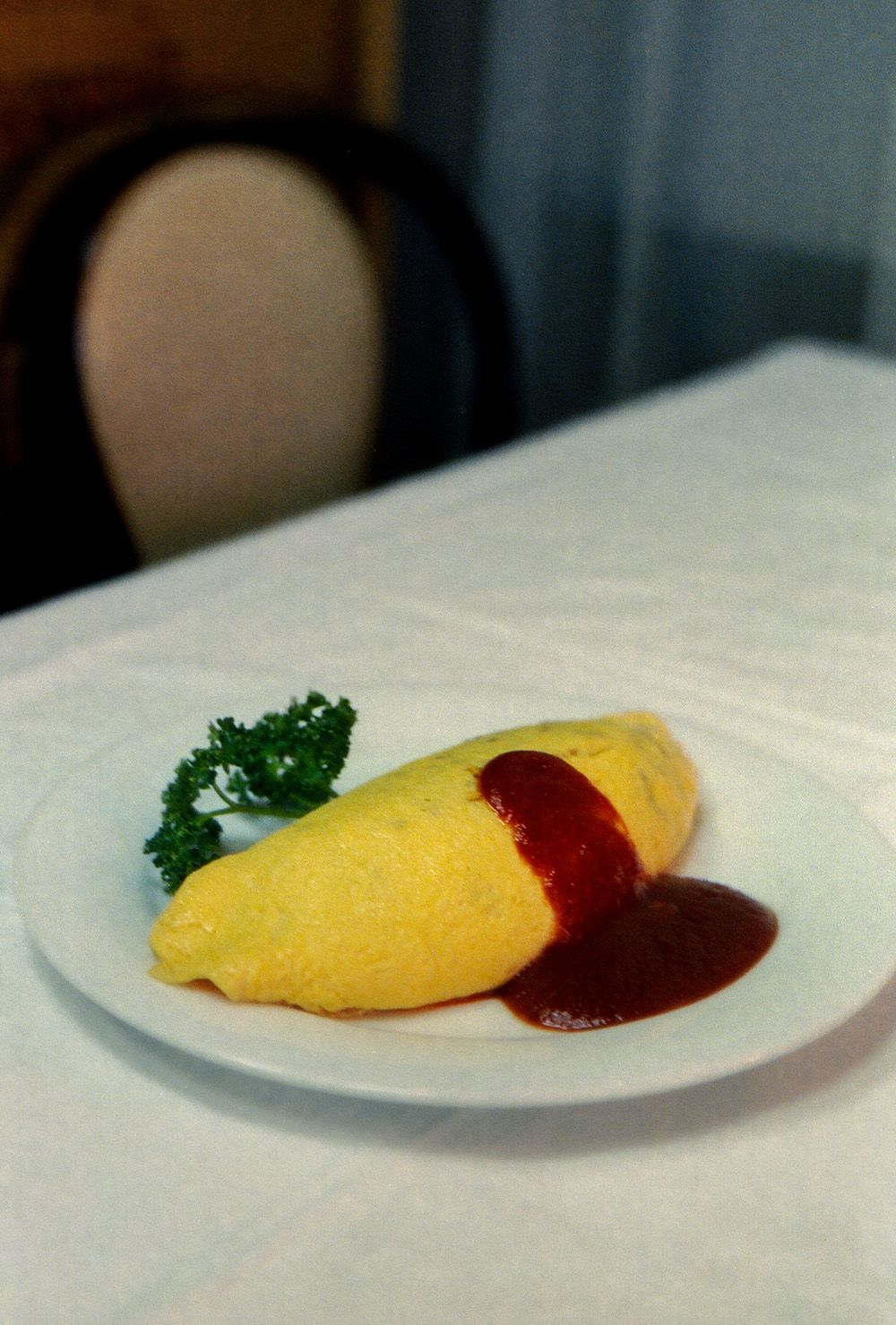
There is a scene in the Japanese cult classic “Tampopo” (1985) by Juzo Itami, that I find myself revisiting in my mind from time to time, unable to forget the frames of seductive food imagery. The film tells the story of a woman named Tampopo and her journey in mastering the art of making ramen. Interspersed throughout the story are sketches of random people and their own relationship to food. Most of them satirical, others more sensual.
The scene that stuck with me in particular was the one with the omurice, a classic yoshoku dish combining French and Chinese cuisines – omelet and fried rice. A homeless man and a hungry young boy sneak into a local restaurant kitchen. The disheveled, ragged man quickly starts grabbing ingredients and condiments from nearby shelves and cooks like he could do it blindfolded with one hand tied behind his back. With swift motions, he pours whipped egg into a pre-oiled frying pan and vigorously stirs the mixture with a pair of chopsticks. Holding the frying pan with one hand and carefully tapping the handle with the other fist, the omelet takes form and is flipped over a small hill of fried ketchup rice. Its shape is smooth and one consistent shade of canary yellow.
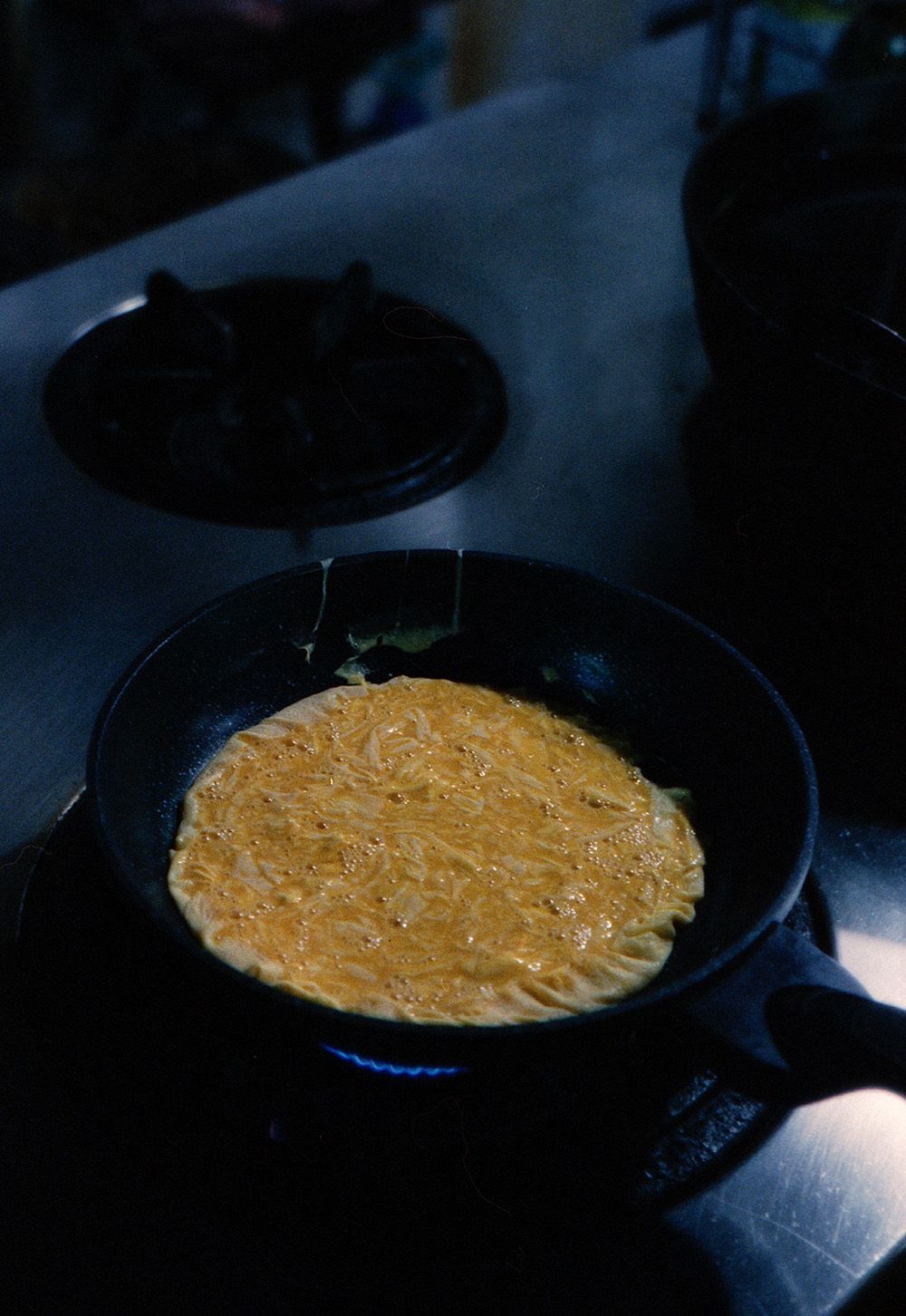
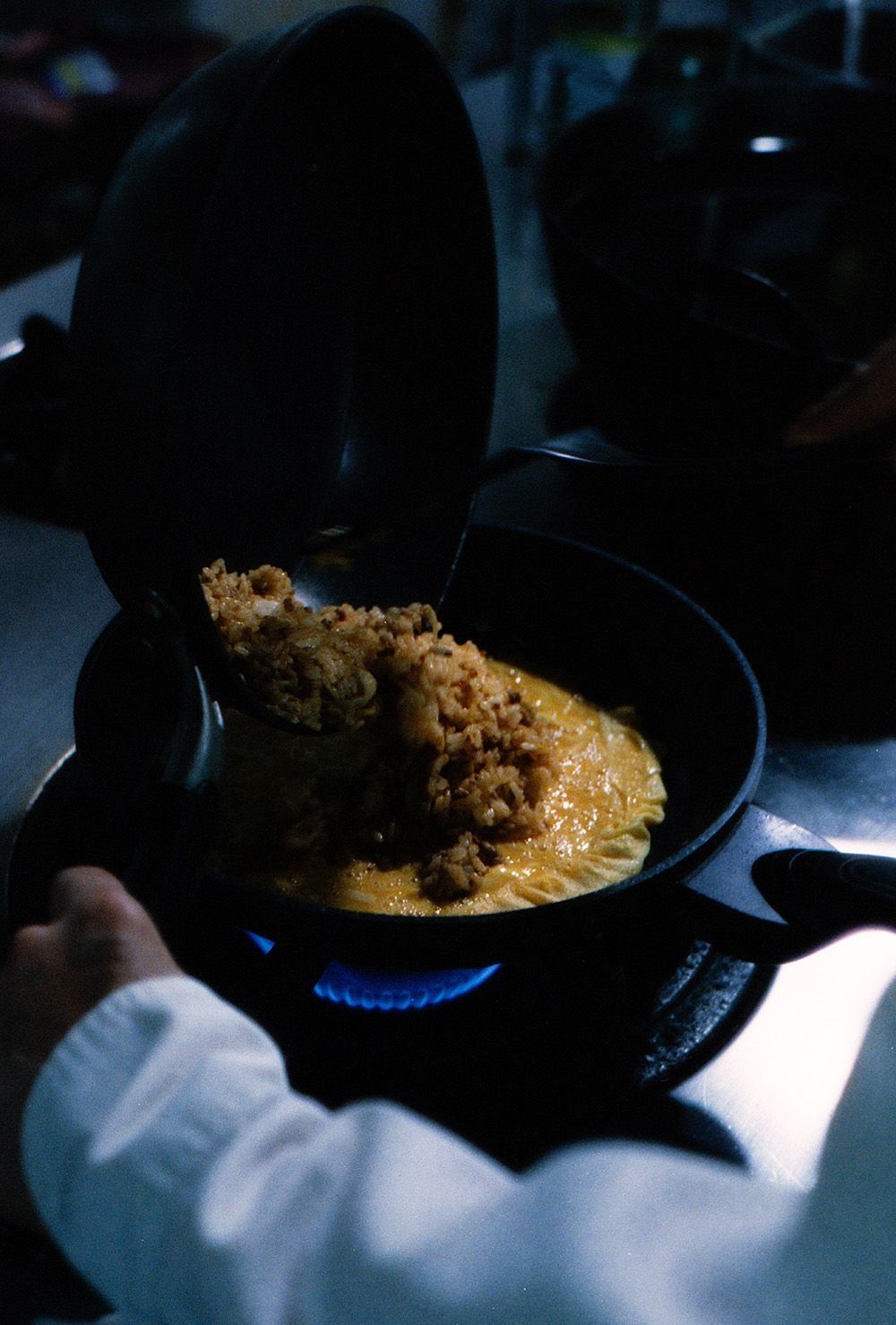
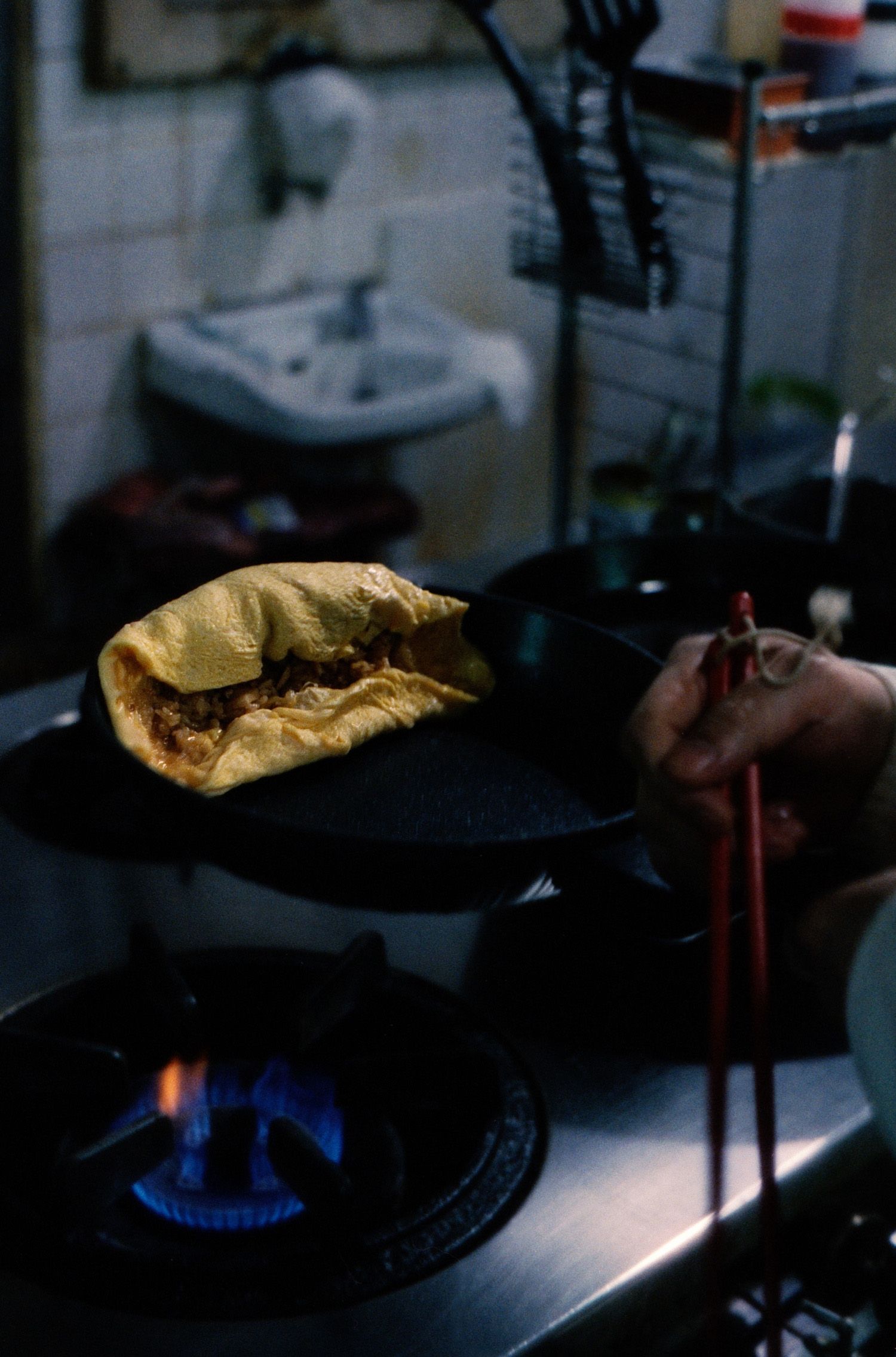
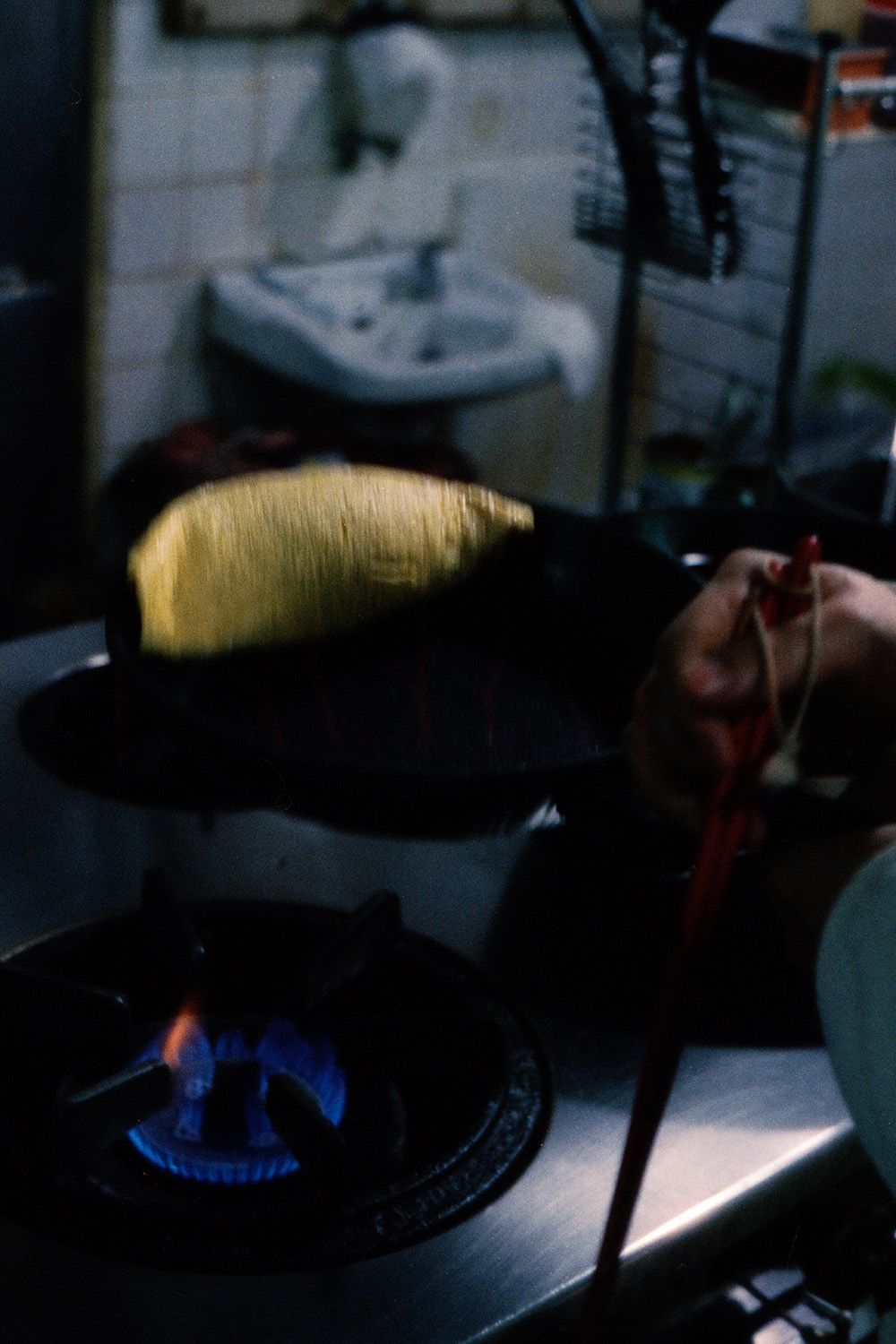
Omurice is a poster child of yoshoku cuisine, which is not hard to understand due to its visually aesthetic appearance and overall likability by all ages. Yoshoku cuisine – Japanese-style Western food – is still quite young compared to washoku (traditional Japanese cuisine).
Until Meiji Restoration (1868-1912), there was little foreign influence on Japanese cuisine, with the Tokugawa Shogunate government enforcing a strict isolationist policy. When this national seclusion ended during the Meiji Restoration, the Emperor encouraged the people to welcome foreign influences, believing it would have a good effect on the Japanese culture, economy, and its people. Until then, Japanese people hadn’t consumed much (or any) meat due to both religious and practical reasons. Many at the time believed that one reason why the Japanese had small physiques compared to Westerners was that they did not eat meat or dairy products. The Meiji government began to chip away the long-lasting dietary taboos, hoping the Japanese would become as big-built and strong as Westerners.
As Japan opened its doors to the world, foreign ingredients and cuisine were introduced to Japanese chefs who incorporated and adapted it into Japanese cooking, creating a whole new genre of fusion cuisine: yoshoku. It is believed that the yoshoku restaurant Rengatei, in Tokyo’s upscale Ginza neighborhood, was one of the originators of omurice, having first put it on the menu in 1900. Since then, omurice has spread throughout Japan, into the homes of families and local restaurants alike.

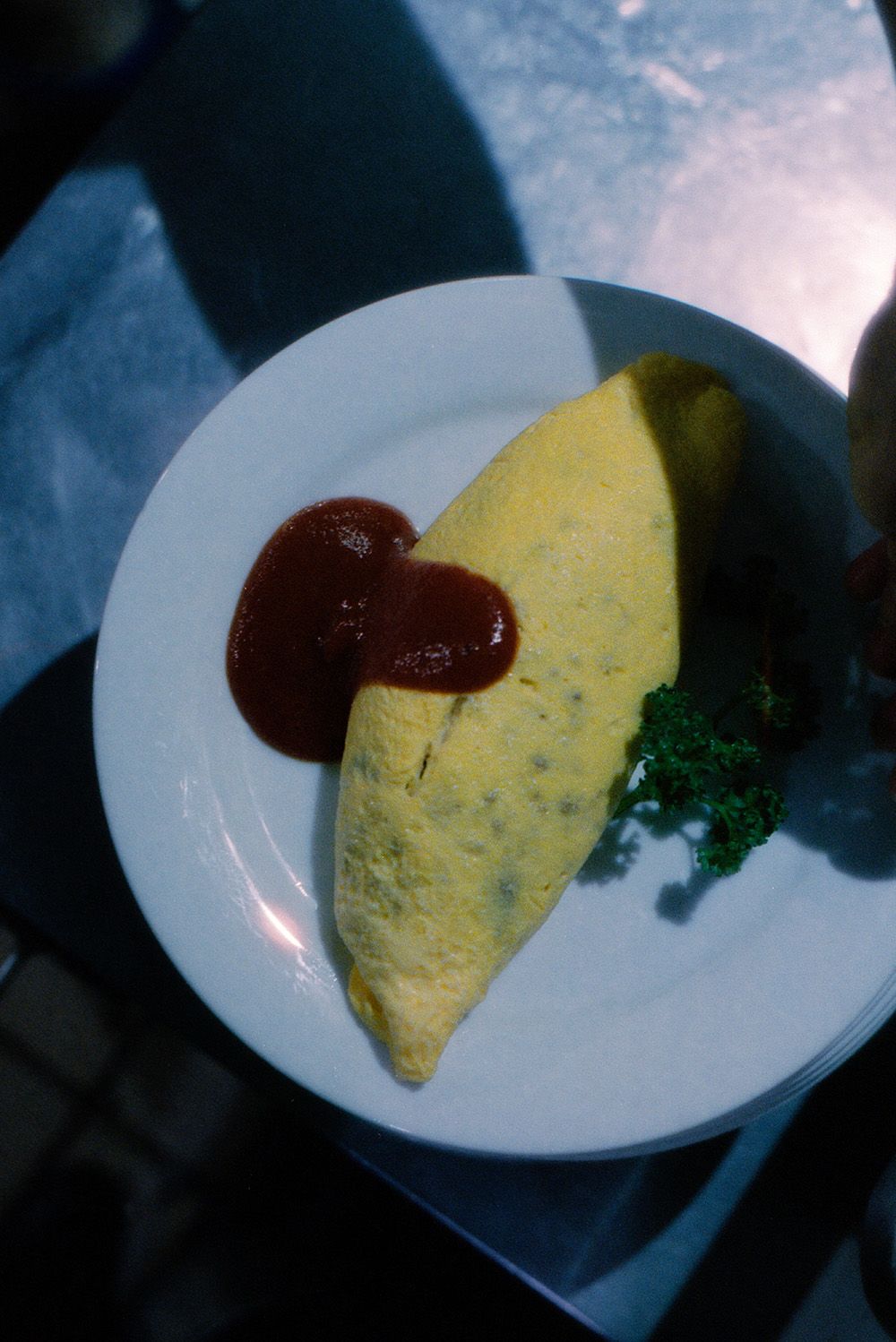
This memorable scene in Tampopo embodies the spirit of omurice as well as yoshoku, portrayed in a humble and very pure way. Although it originates from parts of European cuisine that traditionally are perceived as fine dining, yoshoku cuisine itself is more familiar and unpretentious. For many Japanese people, omurice reminds them of their mom’s cooking, every household having their own unique way of cooking and serving the dishes. It communicates everything one would ever want in soul food in terms of comfort and love; a harmonious balance of smooth and crispy textures, as well as richness, saltiness, and almost adolescent tones of sweetness.
There is the playful act of devouring omurice. As the spoon disappears into that slightly glossy and moist rice, your quest for ingredient treasure hunting begins.
I overhear an American eating omurice for the first time in his life next to me, exclaiming that it “is a perfect food.”
“Is it going to be the classic ham, chicken and pea filling, or perhaps a more novel take, featuring bits of seafood and dashi? Shhh, we are about to find out,” says the imaginary bespectacled Eurovision-commentator in your mind. Scraping the plate with the tip of the spoon, something plump and brown round-shaped is caught by the spoon bowl.
“Ladies and gentlemen, I do believe we have our mushroom on. Les champignons, douze points”.
I overhear an American eating omurice for the first time in his life next to me, exclaiming that it “is a perfect food”. Looking down at my own plate of almost erotic, soft eggs and a shining puddle of ketchup I tilt my head in the reflection. I can feel the omelet’s smooth dent-free surface staring back at me, hard as if saying “Well, I mean you can’t argue with that can you?”

If you liked this article, please consider supporting APPETITE. Your donation will go towards project costs and paying creatives. One-off donations start from $5 via Buy Me a Coffee.

